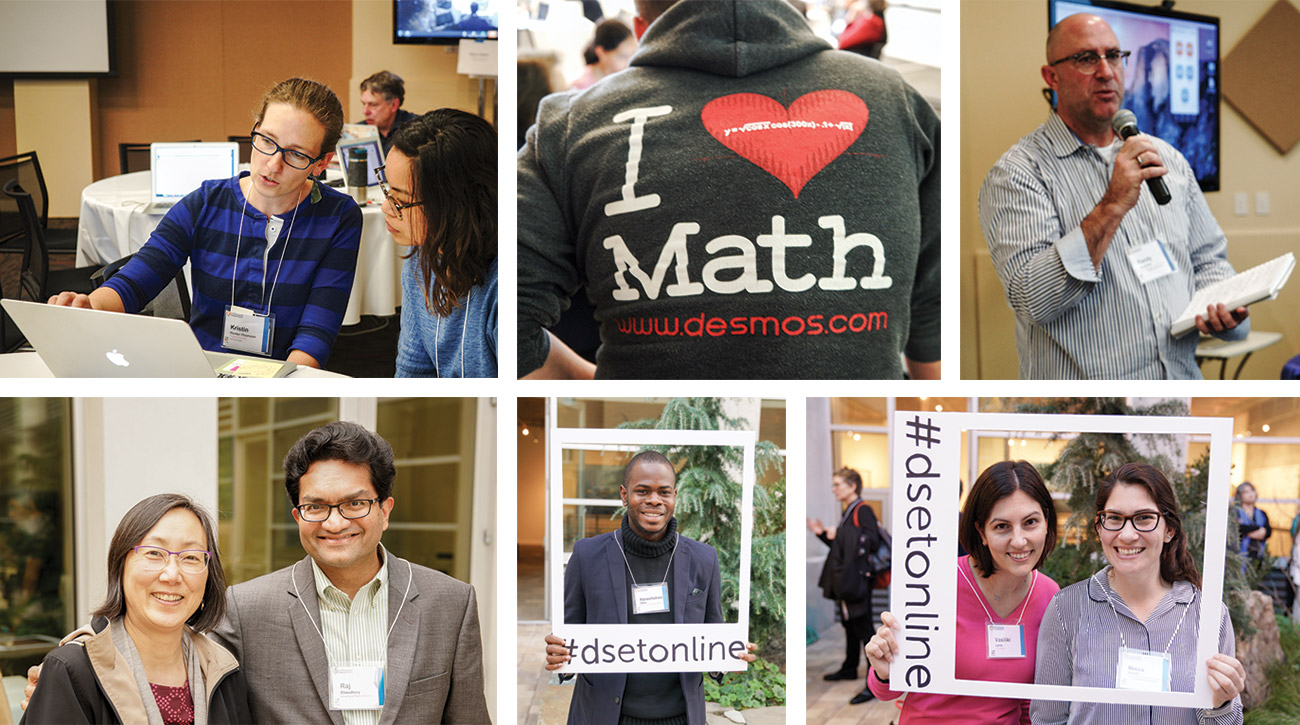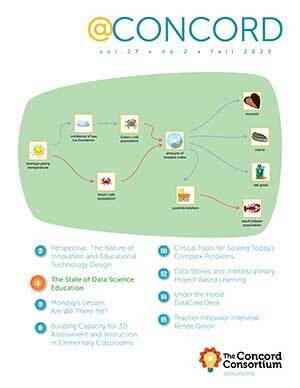Growing the Data Science Education Field
The data revolution has arrived. From weather forecasts to web browsing, we live in a world defined by data. Data scientists are now among the most in-demand positions across STEM organizations nationwide. Tomorrow’s citizens and STEM workers need to be well prepared to work fluidly with data.

However, the growing presence of data science masks a huge gap: we have only begun to understand how to prepare learners to fill this role. Solving this problem requires the urgent, organized creation of an entirely new field of data science education.
The Concord Consortium is proud to be spearheading the effort to jumpstart this new field and furthering the goal of determining how best to bring about effective learning with and about data. A seminal event was the first Data Science Education Technology (DSET) conference. In February 2017 we convened over 100 thought leaders from organizations around the U.S. and six continents in Berkeley, California—right next to our West Coast office—to define the boundaries and essential elements of data science education and to begin laying out the first steps on a pedagogical and technological roadmap. The energy and enthusiasm at the conference buoyed all attendees and confirmed our suspicion: it is high time to move full speed ahead.
Carrying on the momentum from that launch, we are working to be a catalyst for change, actively building worldwide networks through a variety of activities.

Data science education meetups at major science and mathematics conferences invite public participation in the conversation about what data science education is and how best to support its growth. University professors, software developers, curriculum developers, secondary teachers, museum educators, and others are growing the network from the ground up at meetups nationwide. Together, we’re seeding robust future partnerships, defining the data science education landscape, identifying gaps between the present state and the desired future, and generating action plans.
Data science education webinars offer inspiring perspectives from some of the “shining lights” of the data science education community. These online seminars gather perspectives from a broad set of constituents, disseminate some of the best knowledge about important principles of data science education, and provide a standing record of the work in this new field as it grows and evolves.
Broad coalition-building activities encourage individual teachers as well as major industry partners to play a vital role defining and cultivating data science education. By demonstrating the elements of data science education and providing exemplars and models for others to emulate, they help provide concrete answers to some of the important questions we face: What qualifies as a data science experience? Should data science courses stand alone or be integrated into science, economics, social studies, and mathematics courses across the grade 6-14 curriculum? How can we best prepare tomorrow’s data science educators?
Across all of these coordinated efforts, we’re working to ensure high-quality, data-rich experiences for learners throughout the education system. We look forward to working together to build networks, collaborations, and new modes of teaching and learning around data science education—and we invite you to join us at an upcoming meetup or webinar: concord.org/meetup
Like Us, Follow Us
We’re thrilled to have you as friends and followers. Get the latest updates on happenings at the Concord Consortium by following us on these sites.
This material is based upon work supported by the National Science Foundation under grant DRL-1435470. Any opinions, findings, and conclusions or recommendations expressed in this material are those of the author(s) and do not necessarily reflect the views of the National Science Foundation.
